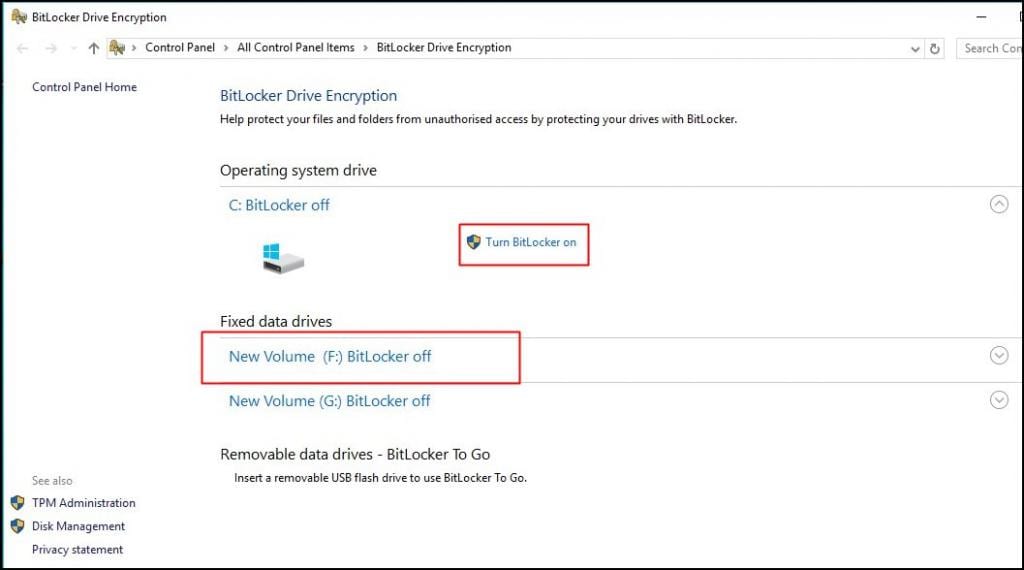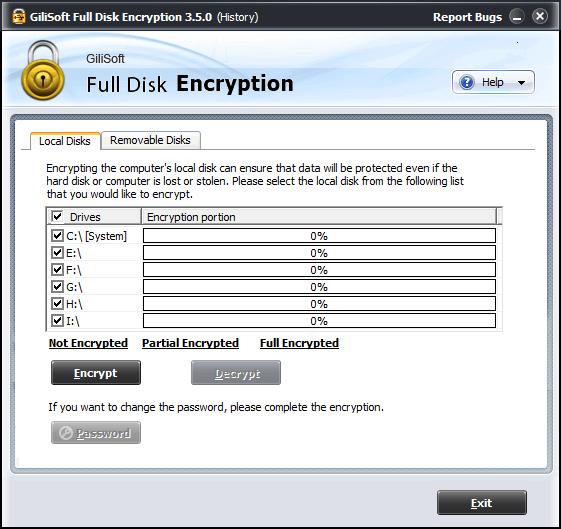


In this way - if you have not activated FileVault - you can easily access the hard drive and the data on it with another computer.
#Disk aid encryption install#
In practice, however, FileVault is actually the most effective protection, while the user password helps prevent the system from being tampered with or the unauthorized use of the Mac.įor example, if the Mac is stolen, the thieves can remove the hard drive and install it in an external hard drive enclosure. When the Mac is password-protected, FileVault appears to be a little "double-mocked". Your key vault and VMs must reside in the same Azure region and subscription.įor details, see Creating and configuring a key vault for Azure Disk Encryption with Azure AD (previous release).In what scenario does FileVault protect my data?
#Disk aid encryption update#
On machines that didn't have the correct policy setting, apply the new policy, force the new policy to update (gpupdate.exe /force), and then restarting may be required.Īzure Disk Encryption requires an Azure Key Vault to control and manage disk encryption keys and secrets. Azure Disk Encryption will fail when custom group policy settings for BitLocker are incompatible. For information about the group policy for “Allow BitLocker without a compatible TPM,” see BitLocker Group Policy Reference.īitLocker policy on domain joined virtual machines with custom group policy must include the following setting: Configure user storage of BitLocker recovery information -> Allow 256-bit recovery key. For domain joined VMs, don't push any group policies that enforce TPM protectors.
#Disk aid encryption windows#
The Azure Disk Encryption solution uses the BitLocker external key protector for Windows IaaS VMs. "SystemDefaultTlsVersions"=dword:00000001 NET version has not been updated to 4.6 or higher, the following registry change will enable ADE to select the more recent TLS version: If TLS 1.0 has been explicitly disabled and the.

The VM to be encrypted must be configured to use TLS 1.2 as the default protocol.For more information, see Azure Key Vault behind a firewall. If your security policy limits access from Azure VMs to the Internet, you can resolve the preceding URI and configure a specific rule to allow outbound connectivity to the IPs.The IaaS VM must be able to connect to an Azure storage endpoint that hosts the Azure extension repository and an Azure storage account that hosts the VHD files.To write the encryption keys to your key vault, the IaaS VM must be able to connect to the key vault endpoint.To get a token to connect to your key vault, the IaaS VM must be able to connect to an Azure Active Directory endpoint.To enable the Azure Disk Encryption feature using the older AAD parameter syntax, the IaaS VMs must meet the following network endpoint configuration requirements: The Supported VMs and operating systems section remains the same. This article supplements Azure Disk Encryption for Windows VMs with additional requirements and prerequisites for Azure Disk Encryption with Azure AD (previous release). VMs that were already encrypted with Azure AD application parameters are still supported and should continue to be maintained with the AAD syntax. To view instructions to enable VM disk encryption using the new release, see Azure Disk Encryption for Windows VMs. All new VMs must be encrypted without the Azure AD application parameters using the new release. With the new release, you are no longer required to provide Azure AD credentials during the enable encryption step. The new release of Azure Disk Encryption eliminates the requirement for providing an Azure AD application parameter to enable VM disk encryption.


 0 kommentar(er)
0 kommentar(er)
